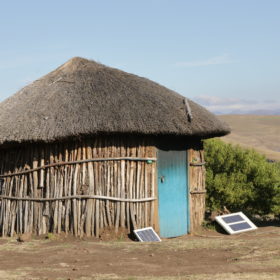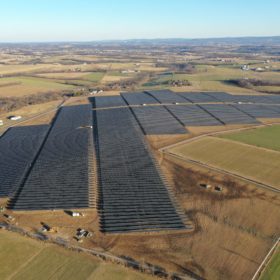Weekend Read: Famine to feast – China’s solar market in 2023
China’s solar industry rebounded in 2023 after years of pandemic-related sluggishness. As the year draws to a close, pv magazine looks back at key highlights of 2023 and considers the prospects for 2024.
Producing the goods
Germany’s Fraunhofer Institute for Solar Energy Systems (ISE) is demonstrating how a solar-powered refrigeration unit and dryer could be self-sustaining and improve food security in Kenya.
African PAYG solar companies have hogged 72% of sector’s investment
The first post-pandemic update on the state of the world’s off-grid solar industry has painted a picture of domination by European companies, but highlighted the potential for new startups in West Africa and an increasing use of PV as a backup to unreliable grid supplies.
Off-grid solar continues to expand
The off-grid solar sector has shown resilience in the face of pandemic-related challenges, with 70 million people gaining access to electricity from early 2020 to the end of 2021. However, the ability to pay for solar energy kits has taken a hit.
AfDB announces cheap loans to back off-grid solar in Africa
The African Development Bank has announced that European and US donors will provide $20 million of concessional loans to support pay-as-you-go solar companies in sub-Saharan Africa.
Irena gives latest update on stark chances of electricity access for all by 2030
The International Renewable Energy Agency’s latest annual report on the progress towards UN sustainable development goal seven estimates 670 million people will still lack electricity in 2030, and more than 2 billion will be reliant on unhealthy, polluting cooking methods.
Poland prioritizes renewables in pandemic-recovery plans
It should come as no surprise that clean energy spending is a big chunk of Warsaw’s four-year EU grant and loans package, given that the nation’s grid-connected solar capacity rose from 3.99 GW at the end of 2020 to 6.3 GW four months ago, according to the International Renewable Energy Agency.
IRENA fleshes out chilling effect of Covid on off-grid solar
The clean power numbers published annually by the International Renewable Energy Agency provide a snapshot of the global solar market and, this year, a lot of figures were unchanged from the previous dataset, especially in the off-grid segment.
Indebted Chinese developer spells out obligations in unaudited figures
Covid-19 has left Shunfeng International’s accountants unable to publish its official 2021 numbers on time, but its estimated figures announced a net current liability of almost $155 million and a “capital deficiency” of near $140 million.
The sun is still shining on poly makers but solar developers struggling in China
Polysilicon maker Xinte is forging ahead with a huge expansion strategy just as solar developers at the opposite end of the industry continue to bleed cash.










